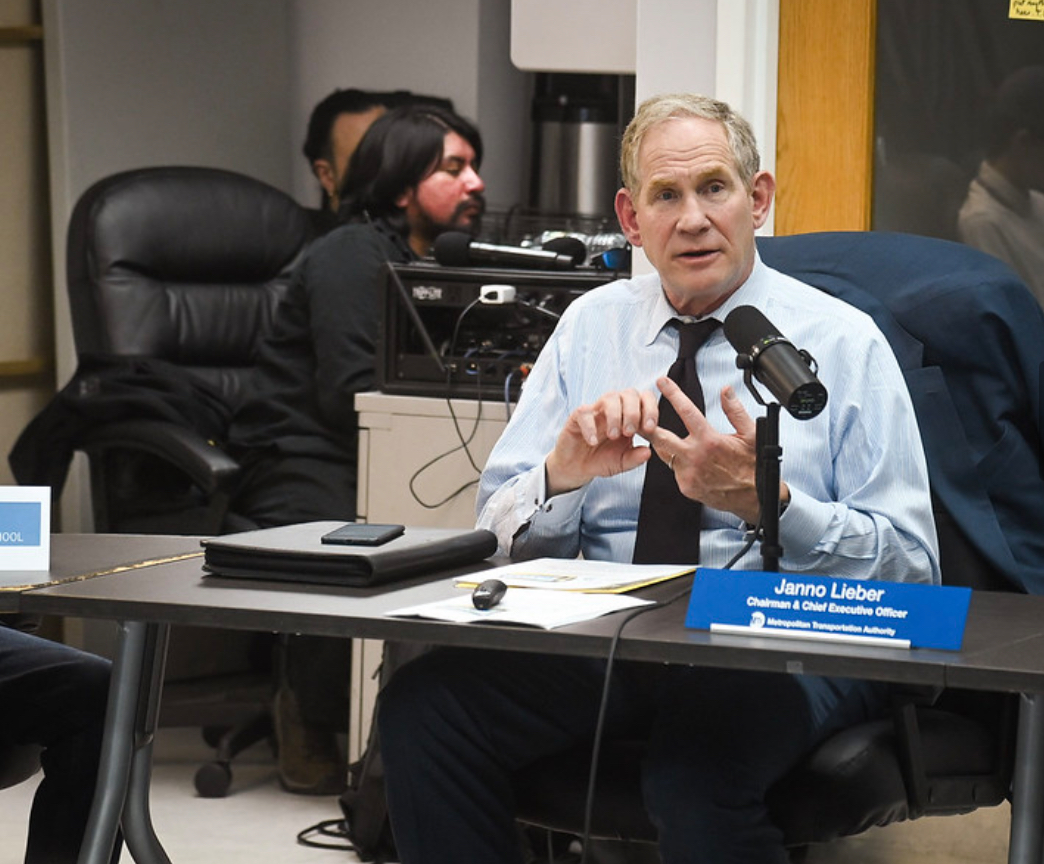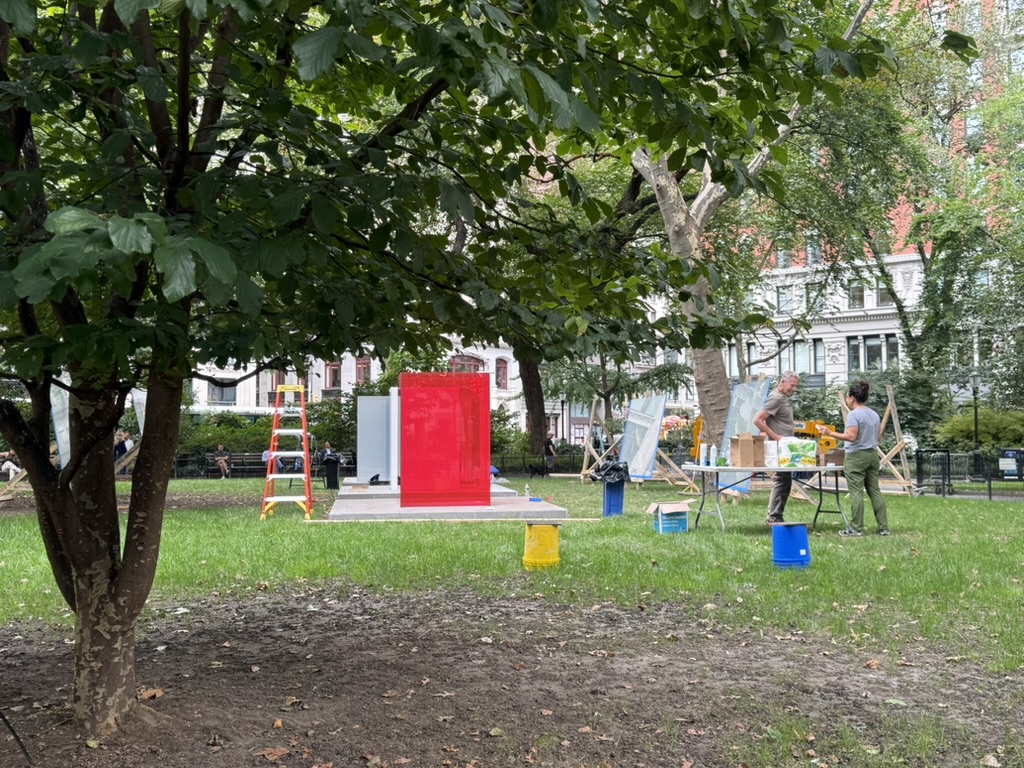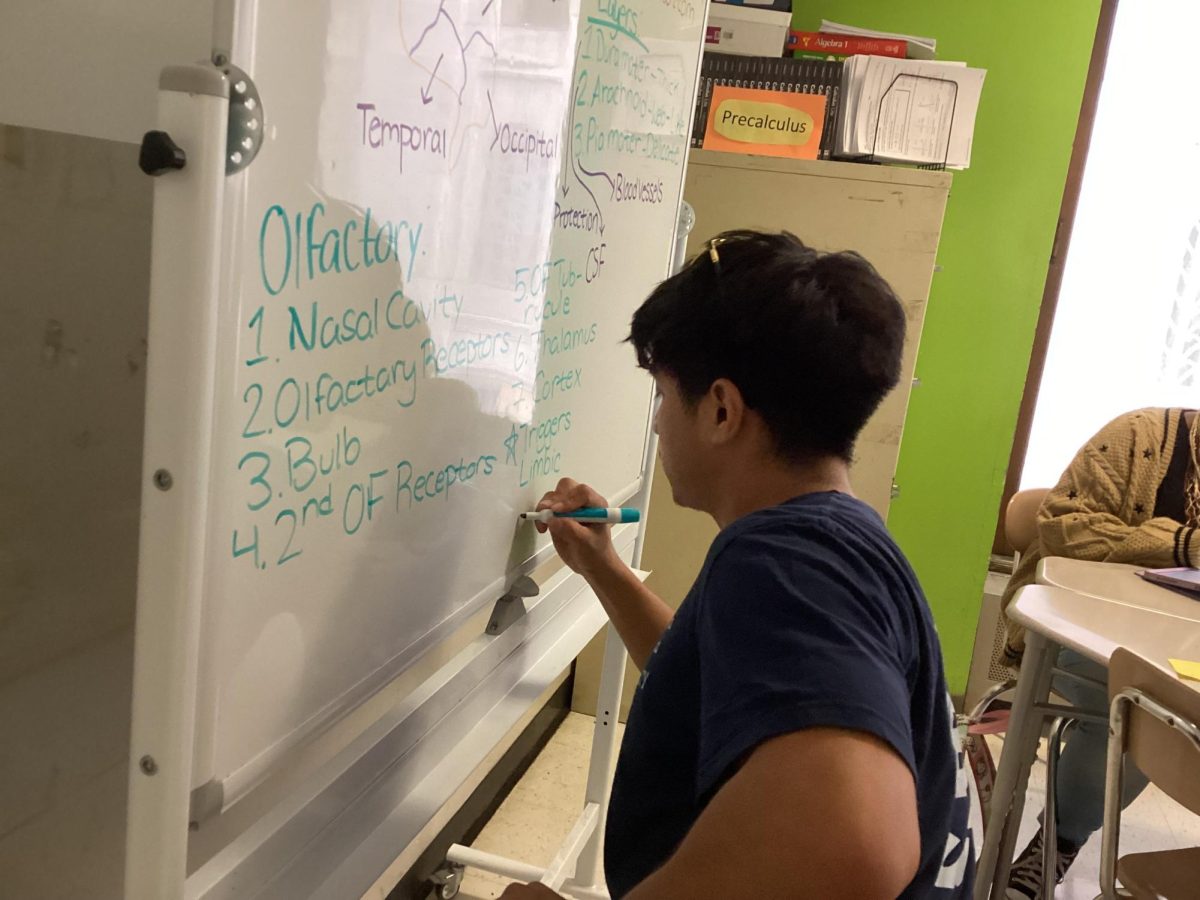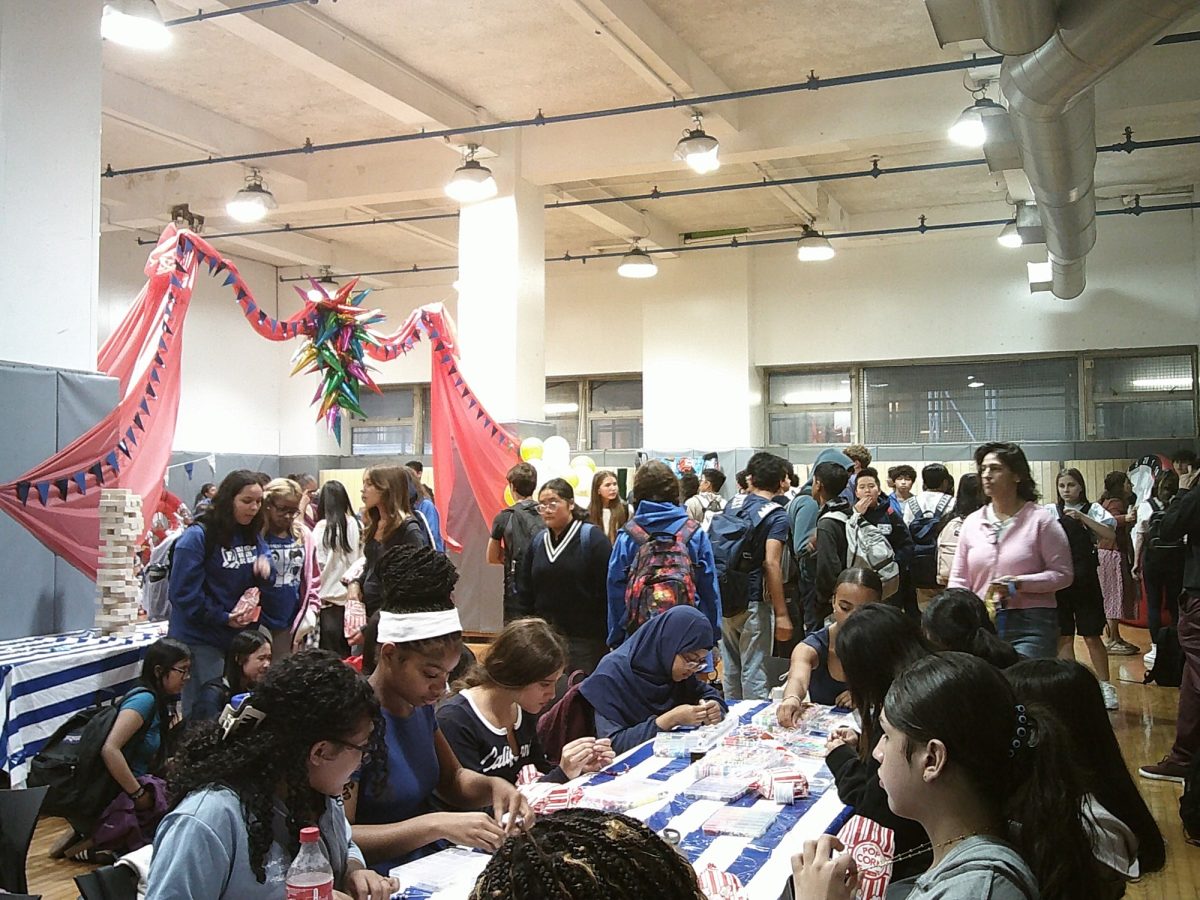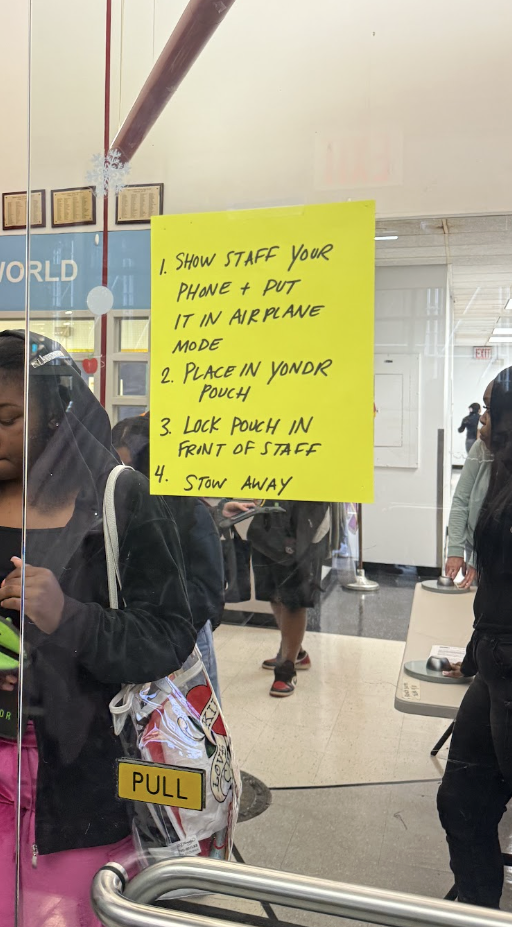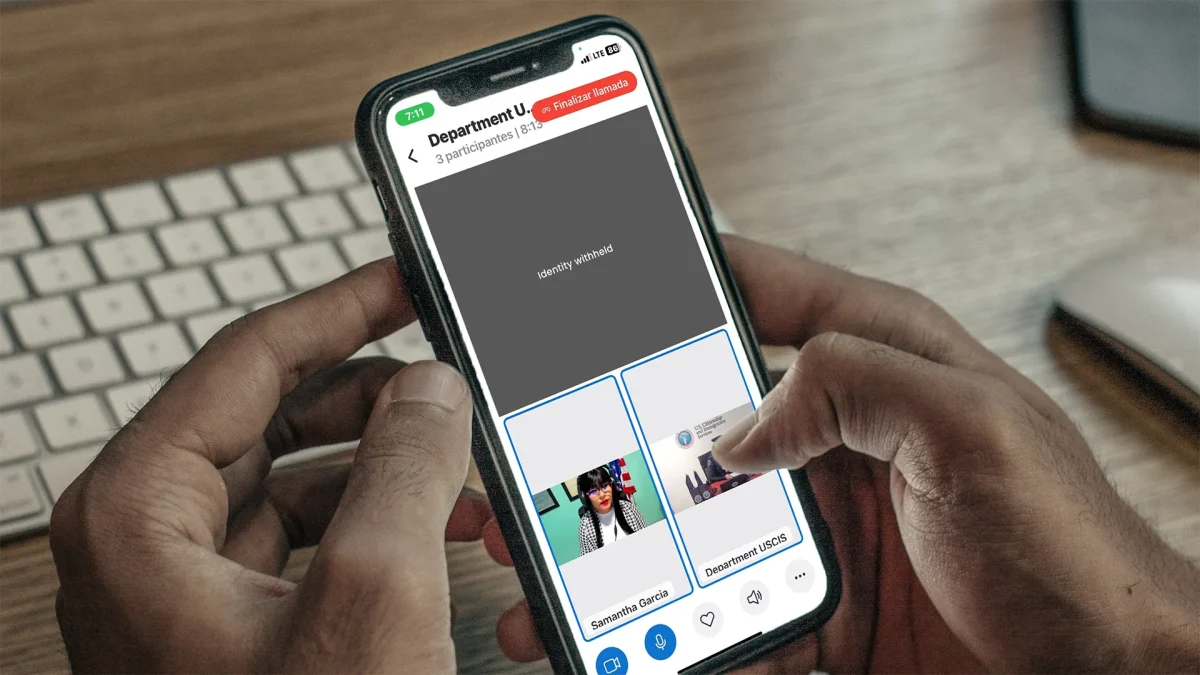On Wednesday, April 23rd, twenty-two student journalists from various schools were invited to an open forum with MTA’s CEO and chairman, Janno Lieber. The conference was held at Brooklyn Technical High School and was aimed at discussing student OMNY cards, fare evasion and the future of MTA.
CEO & CHAIRMAN JANNO LIEBER
Lieber began with opening remarks about policies implemented by the MTA in recent years; the development of OMNY cards was the focal point of the discussion. He emphasized the importance of students having access to public transportation.
He opened the conference by reflecting on his personal connection to public transit.
“I grew up in New York City. I started riding the bus when I was seven years old… I’ve been using the transit system my whole life and I’m passionate about what it does for New York affordability,” he said.
He then shifted into a brief presentation, highlighting the essential role of mass transit in the city.
“In New York—because of our density—we can bring everybody together whether it’s to go off to work, to school, for any other purpose, unless we have this great mass transit system,” Lieber said.
“Transit is what makes New York possible and that’s one of the reasons that I’ve always been so passionate about it.”
Lieber also pointed to recent improvements, emphasizing the MTA’s progress.
“Subway service right now, on the numbers, is the best it’s been in 15 years,” he said.
He went on to discuss efforts to speed up buses, especially in Manhattan, where automatic camera enforcement now tickets drivers who block bus lanes or stay in bus stops for more than five minutes. According to Lieber, this has led to a significant boost in bus efficiency.
While highlighting the MTA’s achievements, Lieber also tackled our concerns and elaborated on their commitment to improving the system for all riders.
SAFETY
Subway surfing, homelessness and crime continue to make NYC subway riders feel unsafe and uneasy. MTA CEO Janno Lieber says the agency is working hard to improve conditions.
“We’re going to do everything we can in communication channels and announcements in the subway, as well as repetitive messages you see on the digital screens in the system,” Lieber said, adding that schools are key in teaching students about the dangers of subway surfing.
Accessibility also remains a challenge for riders with disabilities who rely on elevators.
“I always felt everybody should be able to use the subway system. So, in the time that I’ve been chair, we have accelerated the construction of elevators so that it’s happening five times as fast,” he said. “The bus system is fully accessible. The subway system has to catch up, but it’s an area that I’m very proud of.”
Lieber also acknowledged the impact of homelessness on the transit experience.
“We send clinicians out with cops to make them feel safe approaching people dealing with mental health. We have teams at the end of certain train lines to persuade the homeless to accept services.”
He emphasized that safety and cleanliness are priorities, noting that the MTA has hired more cleaners since COVID.
OMNY CARDS–PROS V. CONS
The OMNY card system was initially introduced to all transit riders in May of 2019 by the MTA. Students however were introduced to OMNY cards at the beginning of this year. In practice it is quite simple–you tap your card onto a reader on the turnstile or on the bus and you enter.
Virtually eliminating the hassle of Metro cards and coin payments. The update to the transit system makes commutes for all much more efficient.
“We want everybody to take advantage of the great service that we’re providing,” Lieber said. The OMNY cards were designed for all commuters–especially students to benefit.
However, some may feel that this system is overcomplicating and an already strenuous process. As previously, students received different Metrocards depending on their grade level; effectively making distribution much more of a hassle. But the OMNY cards are geared to simplify the process for all.
“We made it simple, everybody gets the same OMNY Card. And you can use them everywhere: the buses, the Staten Island Railway and the Roosevelt Island tram…there’s no reason anybody should be hopping.” said Lieber.
And as for the future of OMNY cards, Lieber said, “No more metrocards.”
He acknowledges the strain of purchasing new metrocards over and over. As many commuters rely on the MTA to get around the city, they had no choice but to purchase the monthly cards. And that decision can sometimes pose a problem for riders.
“When somebody buys a weekly or monthly, they have to walk up to the terminal and say, ‘how many times am I going to ride this week?’”
OMNY helps riders work around the tedious, and potentially costly process of trying to determine how much money they’ll spend commuting.
“You use OMNY, you get the best fare available automatically. You just keep tapping and when you hit the 12th ride, you get free, the rest of the week.”
All in all the system is designed to help the everyday New Yorker. Lately however it has been facing some problems.
“It’s much fairer, it’s much more equity oriented, a word that the new administration Washington doesn’t want us to use, but I’m going to use it, ‘fair’ and more opportunity for everybody,” said Lieber.
CONGESTION PRICING
The congestion tolls were first implemented in January of 2025. This initiative charges vehicles a fee as they enter the Congestion Relief Zone in Manhattan, right below 60th street. The objective was simple: reduce traffic and incite the public to utilize the MTA.
The MTA is officially responsible for implementing the initiative.
“One of the goals of the program is not just reducing traffic congestion, it’s also generating money for the capital programs so we can rebuild and maintain the physical transit system,” said Lieber.
However, the MTA faces backlash from the program coming as far as the White House.
“We’re in the middle of, you know, a politically tumultuous moment, so we’re addressing the uh we’re receiving a lot of incoming attacks from the Trump administration.”
The Trump administration has sought to end congestion pricing, previously giving New York State officials until March 21st to shutdown the program.
“President Trump before the election and since has spoken out against it because he thinks congestion pricing is bad and is more sympathetic to drivers.”
Yet, Liber stated, “Drivers in New York are disproportionately much better off, especially the ones that come into Manhattan.”
In fact only roughly 4% of New Yorkers drive into Manhattan for work. Whilst 57% rely heavily on public transportation.
“Most people of limited income take the trains or the bus or the commuter rail to get to jobs in Manhattan.”
The congestion pricing–while controversial–has its merits. As it is actively supporting a system that supports millions of New Yorkers to make a living. Lieber stated earlier in the conference that transit acts as an equalizer. Allowing all to benefit and to commute efficiently. Without it, New York City would not be able to function.
Still, the Trump Administration does not hold the MTA in high regard–and they want to end the program. “That has been the principal message from Washington, not about how [they] want to support mass transit or help New Yorkers have more access to opportunity, or even have a safer system, but how they want us to end this congestion pricing system.”
But Lieber and the MTA are fighting back. “They threatened to take away our federal money and we have sued them to say, ‘you can’t do that,” he said.


